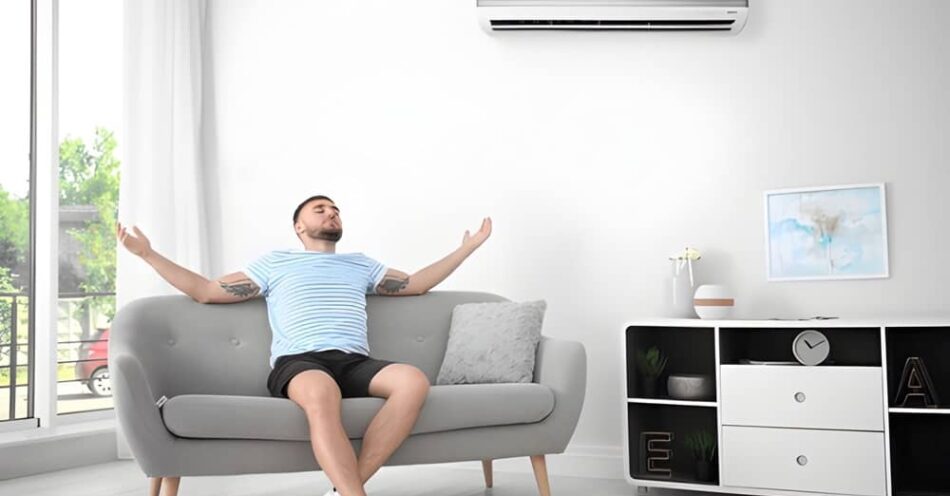
Is it time to upgrade your old space heater to newer heating and cooling technology for summer? Melbourne heatwaves are dry, but even though it doesn’t last as long as the sunny coasts of Australia, you’ll still want reliable cooling.
Although both split and evaporative cooling options cool down a property, their capacity and processes are vastly different. Both are effective under the right circumstances, but you might not be certain which is suitable for your home.
This article will discuss the pros and cons of each system and what works best for your space.
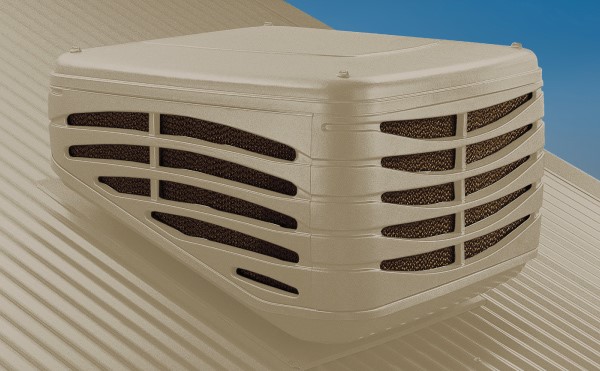
Evaporative cooling pulls in dry, hot air and filters it through a water-filled cooling pad via a unit that’s mounted on your property’s roof. Water evaporates this way and forms a cooling vapour, which the system fan disperses to either a central location or specific rooms with discreet vents.
It’s very similar to feeling chilly when you leave a swimming pool; the water evaporating from your skin lowers body temperature. Here are some benefits:
The main drawback? Sometimes called swamp coolers, they don’t work as well in humid environments since they require dry air to cool. Additionally, you need your windows open to let out warm air, which might not always be an option for you.
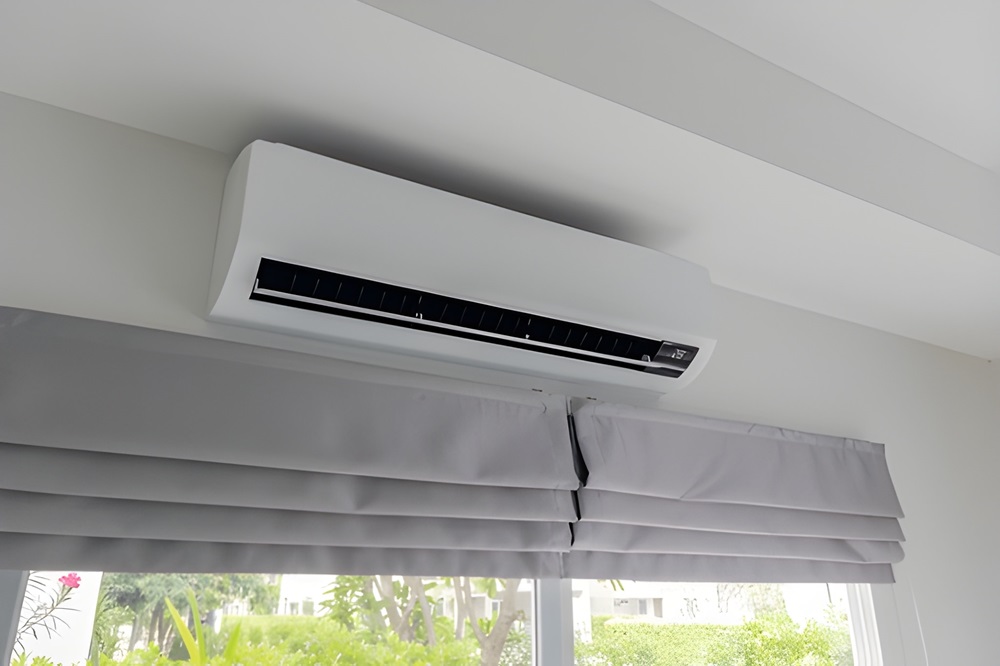
Reverse cycle cooling, such as split systems, is more modern and relies on refrigerant gases for performance. The majority of units produce reverse-cycled air (heating and cooling) no matter the temperature outside.
Split into two parts (an indoor unit and an outdoor compressor), these work together to remove hot air from a house while refrigerant gas cools the incoming airflow and reduces room temperature. The units are linked by refrigerant lines, helping the AC to remove heat from inside to outside. What are the main benefits?
Why might you choose not to get one?
It can be more expensive to run, and less fresh air might circulate as the AC recirculates indoor air. This just means that you might need more air filtration.
The compressor, which is typically installed outside, can be quite noisy when running. This may disturb your neighbours, especially in quiet residential areas. It’s also worth checking your local council’s noise regulations to ensure compliance.
The higher the energy rating, the more efficient the cooling is! When shopping for a split system air conditioner, it’s good to know how energy ratings work, especially with the newer Zoned Energy Rating Labels (ZERL).
Not all split systems have those familiar energy rating stickers. For example, units with ceiling-mounted indoor units and three-phase split systems aren’t required to display Energy Rating Labels, but they do still have official energy ratings.
For the rest, most split systems now use the Zoned Energy Rating Label. This label shows how efficiently an air conditioner performs during a typical heating or cooling season across three different Australian climate zones:
In Victoria, most areas fall into the cold zone, but the north-west corner sits in the average zone. These climate-based ratings help you choose an air conditioner that performs best in your region. The label also includes the noise level, measured in decibels (dB(A)).
To keep your split system energy efficient, you can: keep windows and doors closed, shade the compressor unit, use the thermostat correctly, zone off rooms to use less energy and turn it off when not in use.
For split systems, Aust Climate recommends setting your thermostat temperature between 18°C to 20°C because every 1°C higher adds around 15% to your heating bill.
Unlike other air conditioning systems, evaporative coolers don’t have mandatory energy or water efficiency labels, so here are a few important questions to ask if you’re considering one:
Is it a standard or an inverter system? Inverter models are generally more efficient, especially on lower fan speeds.
What’s the power consumption at different fan speeds? Ask about the power usage at full, half, and low fan speeds. Since these systems often run on lower settings, it’s important to choose a model that uses minimal power at the low end.
How does the system manage water use? Check what kind of water management system it uses, and find out the expected daily water consumption for your area.
Evaporative coolers can use a significant amount of water over summer, and this is the case for ducted systems in hot, dry climates. The amount of water used depends on the size of the unit, but generally speaking, it isn’t recommended for Melbourne summers.
But for you to use a lot less energy, you must open doors and windows, use a low fan speed if possible, adjust it for humidity, prevent air leakage in winter, and maintain it.
Compared to evaporative coolers, split systems offer better energy efficiency, more precise temperature control, and reliable performance in all weather conditions, including humid days.
Read: Top Reasons Why Daikin Air Conditioning is a Smart Investment.
Here is a rough cost guide according to Sustainability Victoria.
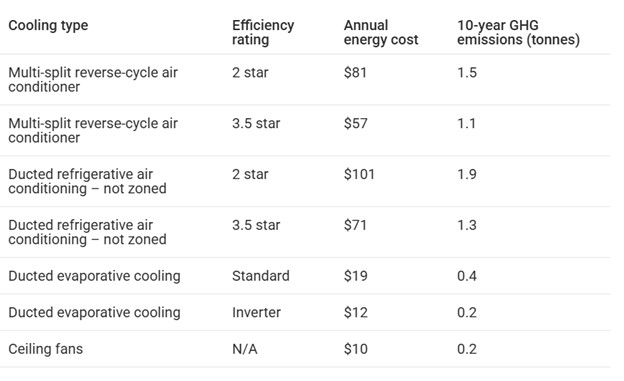
Smaller homes (100 square metres) may cost you around $57 a year for a 3.5-star multi-split reverse-cycle AC and use around 1.1 GHG emissions every 10 years.
Ducted evaporative cooling (standard) prices $19 per year and uses 0.4 tonnes every decade.
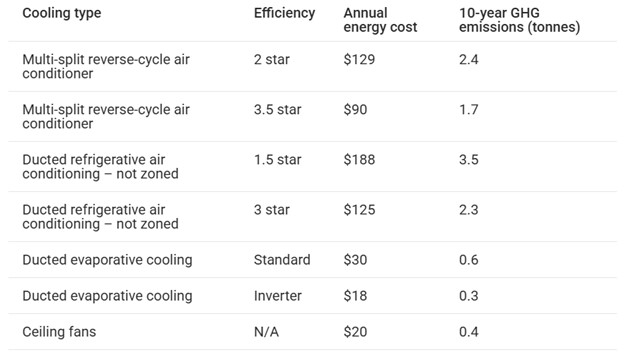
For a medium house (160 square metres), a 3.5-star multi-split reverse-cycle air conditioner has an annual energy cost of $90 and uses 1.7 tonnes of greenhouse gas emissions every 10 years. Ducted evaporative cooling, on the other hand, costs $30 annually and uses 0.6 GHG emissions.
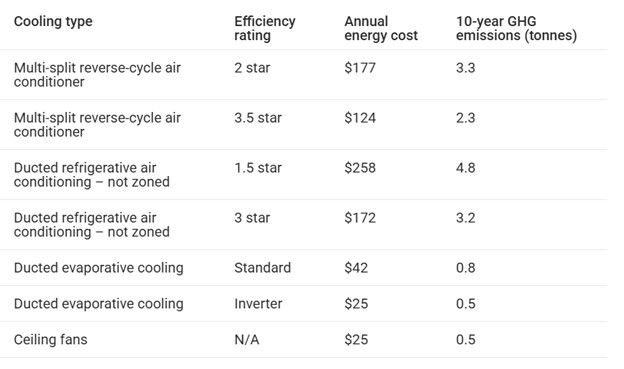
Larger houses (220 square metres) cost around $124 a year to run a 3.5-star multi-split reverse-cycle air conditioning system, which uses 2.3 tonnes of GHG emissions every 10 years.
As for standard ducted evaporative cooling, you’ll spend on average $42 annually and use 0.8 tonnes of emissions.
Split systems heat and cool, so you get the best of both worlds here. Evaporative cooling, however, only cools and depends on air and moisture levels. Accurate temperature control isn’t an option.
It may feature options for changing the speed or strength of the fan, but the system is exclusively for cooling. And since doors and windows must be left open, hot air easily escapes. On a stifling hot day, it’s unlikely you’re going to want your house completely open to air (and pesky bugs!).
A reverse cycle split system gets rid of warm air at the same time it offers coolness, and you can shut off your home while you do so. Better yet, you can remotely control temperatures and feel comfortable when you’re home from work. There’s just a lot more flexibility for families, businesses and working professionals.
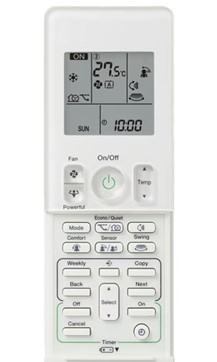
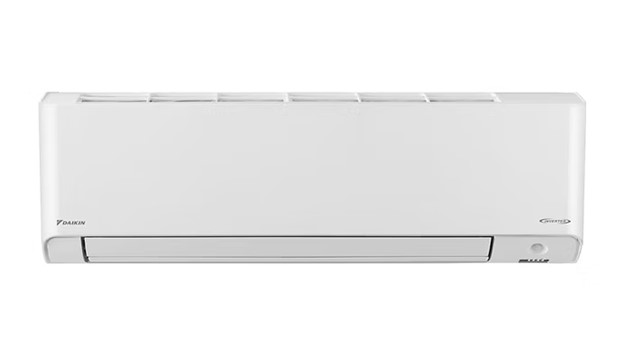
The Alira X by Daikin is a step up, offering super quiet comfort, excellent energy efficiency, and built-in air quality features to keep your home feeling fresh and comfortable all year round.
Approved by the National Asthma Council Australia, Daikin air purifiers and split systems are authorised to display the Sensitive Choice butterfly symbol.
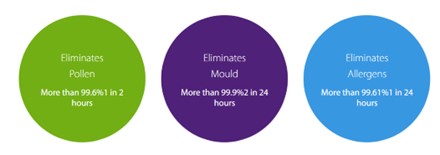
To learn more about split systems, read our blog: Top Benefits of Installing a Multi-Split Air Conditioner in Your Home.
While evaporative cooling has its place in consistently dry climates, the reality is that Melbourne’s weather isn’t always predictable. Split systems, on the other hand, give you year-round comfort and reliable performance no matter what the forecast throws your way.
They offer heating and cooling in one system, precision temperature control, and energy efficiency when used wisely. You can shut your windows, stay cool even on humid days, and enjoy flexible zoning that keeps different areas of your home at just the right temperature.
Yes, evaporative coolers are cheaper to run on paper, but they can’t match the control, performance, or convenience of a quality split system. If you want consistent comfort, cleaner air, and the ability to tailor your climate to your lifestyle, a split system (or multiple) is well worth the investment.
Our team at Aust Climate can help you assess your space, plan the best solution, and install a system that keeps you cosy. From sales and installation to warranty repairs, contact us!
Need split system air conditioning in Box Hill, Blackburn, Lilydale, Kew, Vermont, Balwyn, Ringwood, Rowville, Malvern, Yarra Glen, or Toorak? Drop by our purpose-built showroom and warehouse in Chirnside Park to see our full range of air conditioning solutions. Whether you’re after split systems, electric heating and cooling, ducted reverse cycle systems, add-on cooling or multi-head split systems, we’ve got you covered.
At ACS, we make the process easy from start to finish. Our experienced sales consultants can meet you at your home, on-site, or right here in our showroom to help you find the right solution.
Ready for a quote? Get in touch with Aust Climate today to discuss your heating and cooling needs. We take a thoughtful, tailored approach, whether it’s for your home or business.
Call us on 03 9726 4444, email admin@austclimate.com.au, or check out our New Season Products.